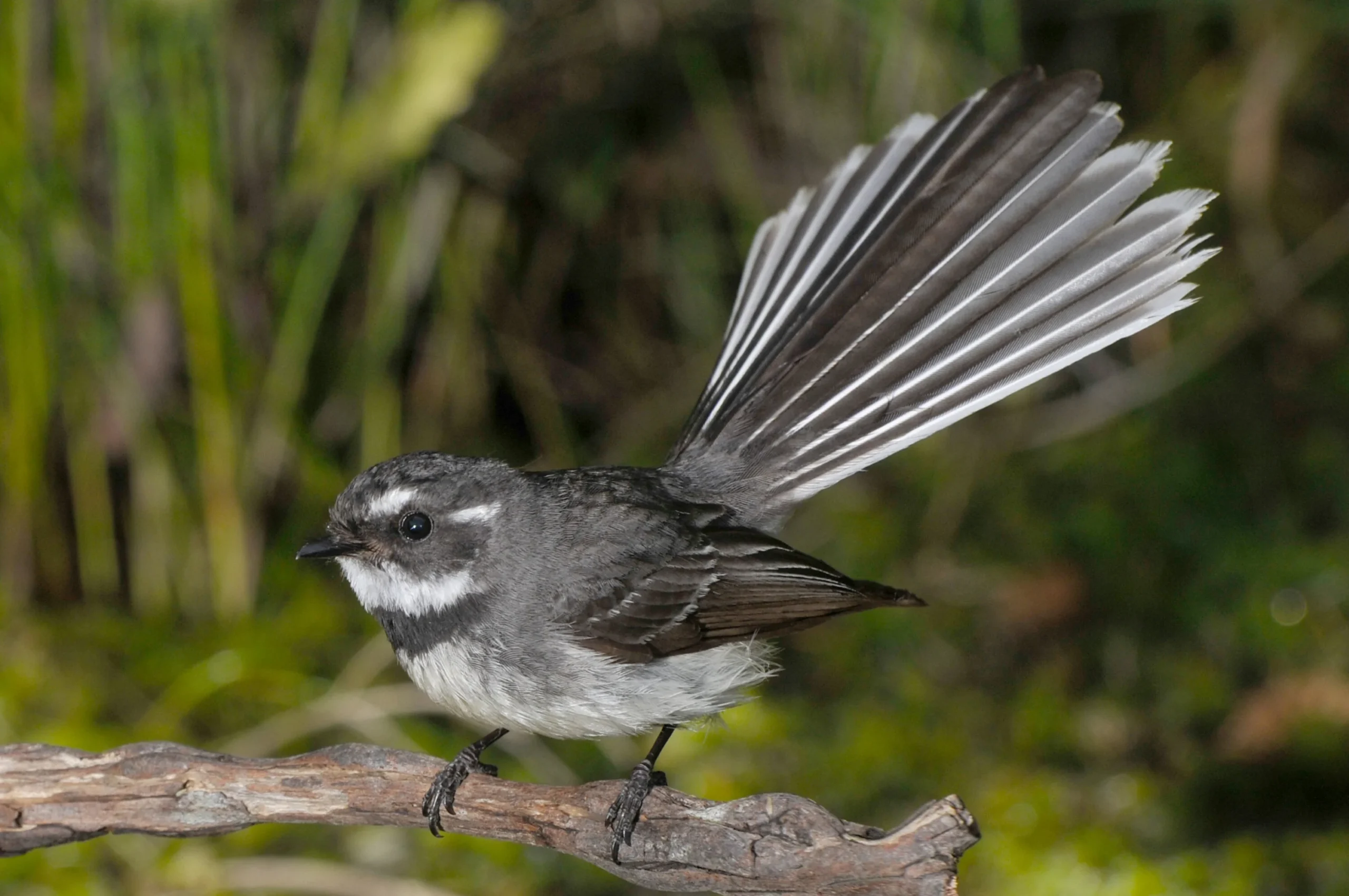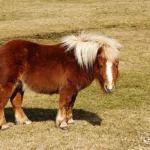
Fantail birds, known for their distinctive fan-shaped tails and acrobatic flight, are small yet fascinating creatures found in various regions worldwide. From their agile aerial maneuvers to their cultural symbolism and adaptive behaviors, these birds captivate both bird enthusiasts and cultural observers alike. Explore these 25 intriguing facts about fantail birds to uncover their unique characteristics and significance in nature and human culture.
The fantail bird, also known as the Rhipidura, belongs to the Rhipiduridae family: The fantail bird, scientifically classified under the family Rhipiduridae, encompasses several species known for their distinctive characteristics. These birds are found in various regions across the world, including Asia, Australia, and Africa. They are known for their agile flight and unique tail shape, which plays a significant role in their behavior and courtship displays. The Rhipiduridae family includes several genera and species, each adapted to different habitats and displaying variations in plumage and behavior.
The fantail bird is known for its distinctive fan-shaped tail, which opens up when it is in flight: One of the most striking features of the fantail bird is its tail, which consists of up to 30 feathers arranged in a fan shape. This tail serves multiple purposes, including enhancing maneuverability during flight and playing a crucial role in courtship displays. When in flight, the fantail spreads its tail feathers to form a fan, creating a visually stunning display. This adaptation allows the bird to make quick turns and agile movements, making it adept at catching insects mid-air, which constitute a significant part of its diet.
Fantail birds are found in various regions across the world, including Asia, Australia, and Africa: Fantail birds have a wide distribution across continents, inhabiting diverse ecosystems such as forests, woodlands, gardens, and urban areas. In Asia, they are found in countries like India, China, and Southeast Asia, where they inhabit both tropical and subtropical regions. In Australia, several species of fantails are native, occupying habitats ranging from rainforests to arid landscapes. Similarly, in Africa, they are found in regions with suitable vegetation and insect populations. This global distribution reflects their adaptability to different environmental conditions and their ability to thrive in various habitats.
The average weight of a fantail bird ranges from 6 to 10 grams: Fantail birds are small and lightweight, with average weights varying between 6 to 10 grams depending on the species and individual. Their light body mass contributes to their agility in flight, allowing them to perform intricate aerial maneuvers such as sudden twists and turns to catch insects. Despite their small size, fantails are resilient and capable of enduring long migrations and seasonal movements in search of food and suitable breeding grounds.
These birds are known for their acrobatic flying skills, making quick twists and turns in the air: Fantail birds are celebrated for their acrobatic flight abilities, characterized by rapid changes in direction and agile movements. Their fan-shaped tail feathers play a crucial role in these aerial displays, enabling them to navigate dense vegetation and catch flying insects with precision. This agility is essential for survival, as it allows fantails to evade predators and efficiently forage for food in challenging environments. Their flight behavior is also integral to courtship rituals, where males showcase their agility and stamina to attract mates during the breeding season.
Fantail birds primarily feed on insects such as flies, mosquitoes, and beetles: The diet of fantail birds consists predominantly of insects, which they catch while in flight or glean from foliage and surfaces. Common prey items include flies, mosquitoes, beetles, and other small flying insects found in their habitats. Fantails are adept at aerial feeding, using their acrobatic flight skills and keen eyesight to detect and capture prey mid-air. Their insect-rich diet provides them with essential nutrients and energy needed for their active lifestyle and reproductive success.
The lifespan of a fantail bird is around 5 to 6 years in the wild: Fantail birds have a relatively short lifespan compared to larger bird species, with individuals typically living for about 5 to 6 years in their natural habitats. Factors such as predation, environmental conditions, and availability of food resources influence their survival rates and longevity. In captivity, where they are protected from natural threats, fantails may live longer, provided they receive proper care and nutrition. The brevity of their lifespan underscores the importance of reproductive success and adaptation to their often-challenging habitats.
Fantail birds are known for their melodious and varied songs, which they use for communication: Despite their small size, fantail birds are accomplished vocalists, known for their melodious songs and diverse vocalizations. These songs serve multiple purposes, including territory defense, attracting mates during the breeding season, and communicating with flock members. Fantails exhibit complex vocal behaviors, producing chirps, trills, and musical calls that vary in pitch and intensity. Their ability to vocalize plays a crucial role in social interactions and maintaining group cohesion within their breeding territories.
The mating season for fantail birds typically occurs during the spring months: Like many bird species, fantail birds exhibit seasonal breeding patterns, with the mating season typically occurring during the spring months. This timing ensures that young birds hatch and mature during periods of abundant food resources and favorable environmental conditions. During the mating season, male fantails engage in elaborate courtship displays to attract females, showcasing their agility and vocal prowess. Once pairs form, they work together to build nests and raise offspring, demonstrating strong parental care and coordination.
The average wingspan of a fantail bird ranges from 15 to 18 centimeters: Fantail birds have a compact body structure complemented by a wingspan that ranges from 15 to 18 centimeters, depending on the species and individual variation. This wingspan is optimized for their agile flight style, allowing them to maneuver swiftly through dense vegetation and urban landscapes. The wings of fantails are characterized by strong muscles and flexible feathers, which contribute to their exceptional flying abilities. Their wingspan-to-body ratio is an adaptation that enhances their efficiency in foraging, predator evasion, and long-distance flights during migration seasons.
Fantail birds are monogamous creatures, often forming long-term bonds with their mates: Fantail birds exhibit monogamous breeding behavior, where pairs form strong and lasting bonds during the mating season. Once a male and female establish a partnership, they remain dedicated to each other throughout the breeding period and sometimes beyond. This monogamous bond plays a crucial role in successful reproduction and parental care, as both partners collaborate in nest building, incubating eggs, and feeding their young. Monogamy also enhances the social stability of fantail populations, ensuring continuity in breeding territories and cooperative behaviors within pairs.
These birds are known to build intricate nests using materials like grass, feathers, and twigs: Fantail birds are skilled nest builders, constructing intricate structures using a variety of natural materials found in their habitats. Common nest materials include grass, plant fibers, small twigs, and feathers, which are meticulously woven together to create a sturdy and insulated home for their eggs and chicks. The design and location of the nest are carefully chosen to provide protection from predators and adverse weather conditions, such as rain and wind. Fantails demonstrate nest-building proficiency, reflecting their adaptive behavior and commitment to ensuring the survival of their offspring.
Fantail birds are considered to be symbols of good luck and happiness in some cultures: In various cultures, including indigenous beliefs and folklore traditions, fantail birds are revered as symbols of good fortune, happiness, and positive omens. Their graceful flight patterns, melodious songs, and vibrant plumage contribute to their symbolic significance, often associating them with auspicious events and prosperous outcomes. In Maori culture, for example, fantail birds are believed to be messengers between the living and the spirit world, conveying messages of hope and blessings. This cultural symbolism highlights the universal admiration for these charismatic birds and their portrayal as bringers of joy and positive energy.
The tail of a fantail bird can consist of up to 30 feathers, arranged in a distinctive fan shape: One of the defining features of fantail birds is their tail, which comprises up to 30 feathers arranged in a fan-shaped configuration. This tail structure is instrumental in their aerodynamic performance, allowing them to execute rapid turns and agile maneuvers during flight. Each feather in the tail is meticulously aligned to maximize airflow and stability, enhancing the bird’s ability to navigate through dense vegetation and urban environments. The fan-shaped tail also serves as a visual display during courtship rituals, where males flaunt their tail feathers to attract potential mates. The intricate design and functionality of the fantail’s tail feathers underscore their evolutionary adaptation to dynamic flight behaviors and social interactions.
Fantail birds have excellent vision, allowing them to spot prey from a considerable distance: Adapted to their insectivorous diet and agile flight style, fantail birds possess keen eyesight that enables them to detect prey and potential threats from afar. Their eyes are large relative to their body size, with well-developed retinas and a high density of photoreceptor cells that enhance visual acuity. This acute vision is essential for spotting small insects, such as flies and beetles, which form the primary component of their diet. Fantails use their superior visual capabilities not only for foraging but also for navigating through complex environments and identifying suitable nesting sites. Their reliance on sharp vision reflects their evolutionary specialization as active hunters and agile aerial predators.
The courtship display of fantail birds involves elaborate aerial acrobatics to attract a mate: During the breeding season, male fantail birds engage in elaborate courtship displays characterized by breathtaking aerial acrobatics. These displays serve to impress females and demonstrate the male’s physical fitness, agility, and reproductive prowess. Typical courtship maneuvers include rapid dives, twists, and turns in mid-air, showcasing the male’s ability to perform precise flight patterns. These aerial displays are accompanied by vocalizations and visual signals, such as flaring of the tail feathers into a fan shape, to further captivate potential mates. The complexity and intensity of these courtship rituals highlight the competitive nature of mating behavior among fantail birds and underscore the importance of physical prowess in securing reproductive success.
The scientific name for the New Zealand fantail bird is Rhipidura fuliginosa: In New Zealand, the fantail bird is known as Rhipidura fuliginosa, a species endemic to the islands’ diverse ecosystems. The New Zealand fantail is distinguished by its small size, robust build, and characteristic fan-shaped tail feathers. It inhabits various habitats, including forests, scrublands, and urban gardens, where it forages for insects and engages in territorial behaviors. Rhipidura fuliginosa is recognized for its agile flight abilities and melodious vocalizations, contributing to its popularity among birdwatchers and conservation efforts in New Zealand. The scientific classification of Rhipidura fuliginosa underscores its evolutionary lineage and ecological niche within the unique biodiversity of New Zealand’s avifauna.
Fantail birds are highly adaptable and can thrive in various habitats, from forests to urban areas: One of the key adaptations of fantail birds is their ability to inhabit diverse environments ranging from natural forests to human-modified urban landscapes. This adaptability allows them to exploit different food resources, nesting opportunities, and environmental conditions throughout their range. In forests, fantails utilize dense foliage and understory vegetation for nesting and foraging, while in urban areas, they adapt to gardens, parks, and residential neighborhoods where insects and nesting sites are abundant. Their flexible habitat use reflects their generalist feeding behavior and opportunistic nesting strategies, enabling them to maintain stable populations despite habitat fragmentation and human disturbances.
These birds are known for their curious and friendly nature, often approaching humans without fear: Fantail birds exhibit a curious and fearless demeanor towards humans, often approaching closely inquisitively. This behavior is facilitated by their innate curiosity and adaptability to human presence, especially in urban and suburban environments where they encounter people frequently. Fantails may opportunistically glean insects disturbed by human activities or investigate potential nesting sites in gardens and parks. Their friendly interactions with humans enhance their visibility and appeal as charismatic wildlife, fostering public interest in birdwatching and conservation efforts. Despite their approachable behavior, it is essential for observers to respect their space and refrain from disturbing nesting activities during breeding seasons.
Fantail birds are considered to be important pollinators for certain plant species: While primarily insectivorous, fantail birds inadvertently contribute to plant pollination through their foraging activities. By feeding on nectar-producing flowers and gleaning insects from floral structures, they transfer pollen grains between flowers, facilitating cross-pollination and reproductive success for certain plant species. This ecological role underscores their significance as pollinators in terrestrial ecosystems, particularly in regions where native flora relies on animal-mediated pollination for genetic diversity and ecosystem resilience. Fantails’ inadvertent role in pollination highlights their ecological interconnectedness with flowering plants and underscores the importance of conserving both bird and plant species for maintaining biodiversity and ecosystem services
In Maori culture, the fantail bird is believed to be a messenger between the living and the spirit world.
In Maori mythology, the fantail bird, known as “piwakawaka,” is revered for its agility and distinctive behavior. It is believed to be a messenger that can travel between the world of the living (Te Ao Marama) and the spirit world (Te Ao Wairua). Maori folklore tells stories of piwakawaka guiding lost souls to their final resting place or delivering messages from ancestors to the living. The bird’s curious and friendly nature, along with its acrobatic flight, adds to its mystical significance in Maori culture. The piwakawaka’s appearance is often interpreted as a sign of good luck or a message from the ancestors, and its presence is respected and admired by the Maori people.
Fantail birds are known to migrate seasonally in search of food and suitable breeding grounds.
Despite their small size, fantail birds are capable of seasonal migration to optimize their chances of survival and successful breeding. In regions with temperate climates, such as parts of Asia, Australia, and New Zealand, fantails may migrate locally in response to changes in food availability or environmental conditions. These migrations are typically short-distance and are influenced by factors such as temperature, daylight hours, and the availability of insects, which constitute their primary diet. During migration, fantail birds maintain flexibility in their habitat use, moving between forests, urban areas, and open landscapes as needed to find food resources and suitable nesting sites.
The tail of a fantail bird can measure up to 10 centimeters in length, adding to its agility in flight.
The fantail bird’s tail is a remarkable adaptation that enhances its aerial agility and maneuverability. Comprising up to 30 feathers arranged in a distinctive fan shape, the tail can measure up to 10 centimeters in length, which is relatively long compared to the bird’s body size. This tail structure allows fantails to perform rapid twists, turns, and sudden changes in direction while in flight. The fan-shaped tail feathers also play a role in attracting mates during courtship displays, where males showcase their agility and aerial prowess to females. This adaptation not only aids in flight but also contributes to the bird’s distinctive appearance and behavior, making it a unique and charismatic species in avian biodiversity.
Fantail birds are highly territorial and will defend their nesting sites vigorously.
Despite their small size, fantail birds exhibit strong territorial behavior, especially during the breeding season. They establish territories that encompass their nesting sites, which are often located in dense vegetation or shrubs. Fantails vigorously defend these territories against intruders, including other fantail birds and potential predators. Their territorial defense may involve vocalizations, aerial displays, and aggressive behaviors to deter threats and protect their offspring. This behavior is crucial for maintaining exclusive access to resources such as food, nesting sites, and mates, ensuring reproductive success and survival in competitive environments. The intensity of territorial defense varies among individuals and may be influenced by factors such as population density and habitat quality.
The population of fantail birds is stable, thanks to their ability to adapt to changing environments.
Fantail birds are adaptable and resilient species that have successfully adjusted to diverse habitats and environmental conditions across their range. Their ability to thrive in various ecosystems, including forests, urban areas, and agricultural landscapes, has contributed to a stable population status. Despite potential threats such as habitat loss, predation, and climate change, fantail birds have demonstrated a capacity to exploit new resources and nesting opportunities. Conservation efforts aimed at preserving habitats and reducing human-induced disturbances play a crucial role in maintaining the stability of fantail populations. Monitoring population trends and implementing sustainable management practices are essential for ensuring the long-term survival and conservation of these charismatic birds.
5 FAQs About the Fantail Bird:
Why is it called a fantail bird?
The fantail bird gets its name from its most striking feature – its tail feathers. These feathers are long and broad, usually exceeding the bird’s body length. The bird has the ability to spread these feathers out in a fan-like display, particularly during courtship rituals or territorial defense. This distinctive display gives the bird its common name.
What kind of bird is a fantail?
A fantail is a type of bird belonging to the Rhipiduridae family. These birds are known for their distinctive fan-shaped tail feathers, which open up like a fan when they are in flight. Fantails are small passerine birds found in various regions across the world, including Asia, Australia, and Africa.
Where do fantail birds live?
The fantail bird has a remarkably extensive range across Eurasia. They can be found in temperate regions stretching from Europe through much of Asia, all the way to Japan. These birds favor woodlands, parks, and gardens, where they can find suitable nesting sites and abundant insect prey.
What do fantail birds eat?
Fantails are insectivores, meaning their diet consists primarily of insects. They are skilled hunters with sharp eyesight and excellent maneuverability in flight. This allows them to snatch insects mid-air, making them efficient predators. Their diet likely varies depending on the specific insect species available in their habitat.
What is the interesting behavior of fanning their tails?
The fantail bird’s habit of constantly flicking its tail up and down is a source of curiosity. The exact reason for this behavior is not definitively known, but scientists have proposed several theories:
Communication: The tail flicking might be a form of visual communication between birds, conveying information about their intentions or status.
Balance: The rapid tail movements could potentially aid in maintaining balance during flight, particularly when making sharp maneuvers while chasing insects.
Flushing Out Prey: Some suggest the tail flicking might help to stir up insects hiding in vegetation, making them easier for the bird to spot and capture.
Researchers continue to study the fantail’s behavior to fully understand the significance of this tail-flicking display.








